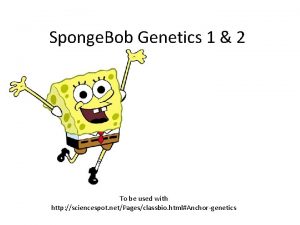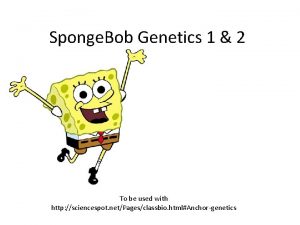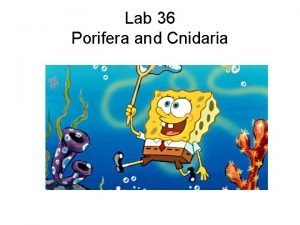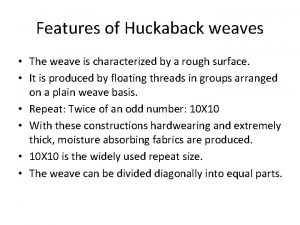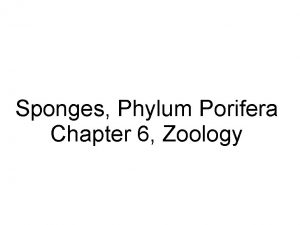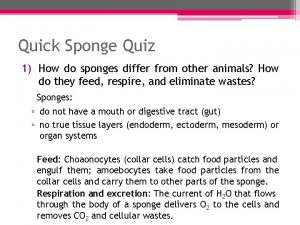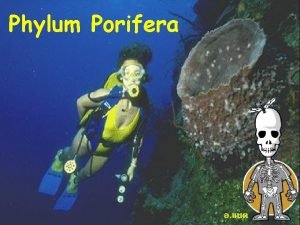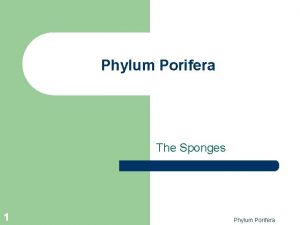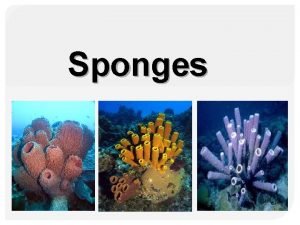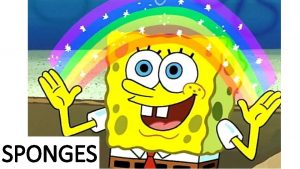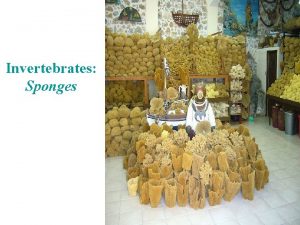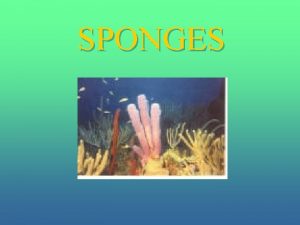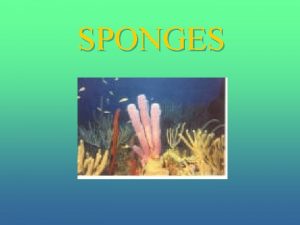Sponges What is a Sponge Sponges are in








- Slides: 8

Sponges

What is a Sponge? Sponges are in the phylum Porifera, which means pore bearer. Sponges have tiny openings, or pores, all over their bodies. Sponges are sessile, they do not move. Sponges are heterotrophic, multicellular, have no cell walls, and a few specialized cells.

Sponges are asymmetrical (no symmetry). Sponges usually have large central cavities. Water circulates through the sponge. Choanocytes are specialized cells that have flagella to move water through the sponge. Water enters through the pores in the sponge and exit through the osculum – the large hole at the top of the sponge. Form and Function Sponges have spicules – a hard structure either made of calcium carbonate (like chalk) or silica (like glass). Archaeocytes make spicules. There are soft sponges that have spongin as a skeleton (a softer material than spicules).

Feeding Sponges are filter feeders. They pull out microscopic food from the water. The choanocytes filter the water as it moves through the sponge. The archaeocytes digest the food.

Respiration, Circulation, and Excretion As water moves through the sponge it takes oxygen from the water through diffusion. The sponge then releases carbon dioxide and wastes into the water to be carried away.

Response Sponges do not have a nervous system. Many sponges can produce toxins that help protect them from predators.

Reproduction Sponges can reproduce both sexually and asexually. Usually a single sponge will produce both eggs and sperm. The eggs are fertilized inside the sponges body, this is called internal fertilization. After fertilization, the zygote forms a larva. Larva is an immature stage of an organism that looks different from the adult. Sponge larva can swim. Sponges reproduce asexually by budding or producing gemmules. Gemmules can survive freezing temperatures and drought. They protect the sponge until conditions are just right.

Ecology of Sponges are important because they can provide living areas for many other animals like snails, sea stars, and shrimp.

